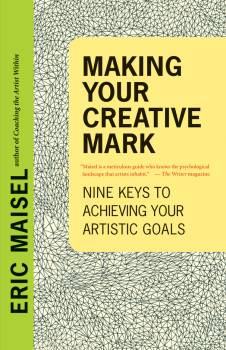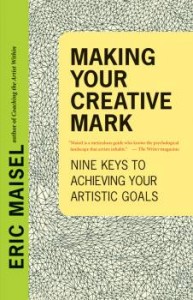
Claim Your Creative Voice with Passion
 As a creativity coach and life purpose alchemist, I attract highly-creative individuals who are looking for more meaning in their lives, both personally and professionally. Part of the work we do together involves honoring their authentic voice.
As a creativity coach and life purpose alchemist, I attract highly-creative individuals who are looking for more meaning in their lives, both personally and professionally. Part of the work we do together involves honoring their authentic voice.
Who are they when they show up fully and completely? And how does this voice get expressed in their professional work?
Many of my clients are artists, writers, innovators, and trailblazers – all of whom have their own unique spin on what it is they do as creative professionals. And when this is expressed authentically, they make an everlasting creative mark on the world.
So how does passion play into making one’s mark in the world? And how does passion feed one’s creative voice?
Today, I’ve invited one of my early mentors, Eric Maisel to join me in this rich discussion. Eric was instrumental in my becoming a certified creativity coach. Through his books and teachings, I gained a deep understanding of what it means to “make your creative mark.”
Eric’s most recent book, Making Your Creative Mark: Nine Keys to Achieving Your Artistic Goals proves once again why he is widely-recognized as a top creativity expert. Here’s what he had to say about the relationship between passion and voice.
******************
A logical — and vital — relationship exists between passion and voice. It is very hard to be passionate about what you’re doing if you haven’t found your voice as an artist. Imagine being forced to sing an octave too high or an octave too low, straining to hit notes that you can’t really hit and that aren’t natural to you. It would be very hard to be passionate about singing in that situation.
It is exactly like that with respect to whatever art you are creating. Whether you have been forced by circumstance not to create in your own voice, or whether you’ve avoided creating in your own voice for psychological reasons, the result will be a tremendous lack of passion for what you’re doing. Creating in your authentic voice produces and sustains passion. With that in mind, here are ten tips for finding or reclaiming your voice. They are framed in terms of visual art, so if you are not a visual artist you will need to translate them so that they make sense for your art discipline.
1. Detach from your current visual library. A very common problem, and almost always an unconscious one, is the need an artist feels to make his work look like something he holds as “good art” or “real art” — very often old master art. Because he possesses an internal library of the successful artworks of well-known artists, without quite realizing that he is doing it, he aims his art in the direction of those successes. It is vital that an artist detach from that visual library — extinguish it, as it were — so that his own imagery has a chance to appear.
2. Try not to rest on skills and talent. Maybe you excel at producing dynamic-looking cats or turning a patch of yellow into a convincing sun. That you have these talents doesn’t mean that you ought to be producing lifelike cats or brilliant suns. Your strongest subject matter and style choices depend on what you want to say rather than on what you are good at producing. By all means, parlay your skills and talents — but don’t rely on them so completely that you effectively silence yourself.
3. Allow risk-taking to feel risky. Very often the personal work you want to do feels risky. Intellectually, you may find a way to convince yourself that the risk is worth taking — but when you try to take the risk, you balk because you suddenly feel anxiety welling up. Remember that a risk is likely to feel risky. Get ready for that reality by practicing and owning one or two robust anxiety-management strategies (more than a score of them are described in my book Mastering Creative Anxiety).
4. Complete projects for the sake of making progress. When you make new work that you think aims you in the direction of your genuine voice, try to complete that work rather than stopping midway because “it doesn’t look right” or “it isn’t working out.” You will make more progress if you push through those feelings, complete things, and only then appraise them. It is natural for work that is a stretch and new to you to provoke all sorts of uncomfortable feelings as you attempt it. Help yourself tolerate those feelings by reminding yourself that finishing is a key to progress.
5. Think at least a little bit about positioning. You may want to develop your voice independent of art trends and say exactly what you want to say in exactly the way you want to say it. On the other hand, it may serve you to take an interest in what’s going on and make strategic decisions about how you want to position yourself vis-à-vis the world of galleries, collectors, exhibitions, auctions, movements, and so on. It isn’t so much that one way is right and the other is wrong but rather that some marriage of the two, if you can pull it off, may serve you best: a marriage, that is, of marketplace strategizing and of intensely personal work that allows you to speak passionately in your own voice.
6. Try to articulate what you’re attempting. Artists are often of two minds as to whether they want to describe what they are attempting. Paraphrasing a visual experience into a verbal artist’s statement often feels unconvincing and beside the point. On the other hand, it can prove quite useful to announce to yourself what you hope to accomplish with your new work. By trying to put your next efforts into words, you may clarify your intentions and as a consequence more strongly value your efforts. The better you can describe what you are doing, the better you may understand your artistic voice — and the more passionate you can be in talking about your work.
7. Try not to repeat yourself. Repeating successful work has a way of reducing anxiety and can bring financial rewards as well. But it may also prevent us from moving forward and discovering what we hope to say. A balance to strike might be to do a certain amount of repeat work, for the sake of calmness and for the sake of your bank account, and to also add new work to your agenda. If you keep repeating yourself, it will prove very hard to remain passionate about your work.
8. Revisit your earliest passions. Life has a way of causing us to forget where our genuine passions reside. You may have spent decades in a big city and completely forgotten how much the desert means to you. You may have been so busy painting and parenting that your burning passion for creating a series of cityscapes fell off the map somewhere along the line. Finding your voice may involve something as simple and straightforward as making a list of your loves and starring the ones that still energize you. This is one of the simplest and smartest ways to discover what you are passionate about and what you want to say.
9. Think about integrating your different styles. Maybe you make two sorts of art, abstract relief paintings and realistic flat paintings. This division may have occurred at some point when, perhaps without consciously thinking the matter through, you decided that the one painting style allowed you to do something that the other didn’t. It may pay you to revisit this question today and see if the two styles can be integrated into some third style that allows the best of both current styles to come together. Whatever you discover from that investigation — whether it’s to move forward in a new way or to recommit to your current methods — you will have helped yourself better understand your artistic intentions. A lot of new passion can arise from these efforts at integration.
10. Accept never-before-seen results. It can feel odd to speak in your own voice and then not recognize the results. Because what you’ve created may be genuinely new — and completely new to you — it may look like nothing you’ve ever seen before. That can prove disconcerting! Don’t rush to judge it as too odd, a mess or a mistake, or not what you’d intended. Give it some time to grow on you and speak to you. Your voice may sound unfamiliar to you if you’ve never heard it before!
Remember: one of the keys to maintaining passion and enthusiasm for your work is finding your own voice and speaking in it!
********
Eric Maisel is the author of Making Your Creative Mark and twenty other creativity titles including Mastering Creative Anxiety, Brainstorm, Creativity for Life, and Coaching the Artist Within. America’s foremost creativity coach, he is widely known as a creativity expert who coaches individuals and trains creativity coaches through workshops and keynotes nationally and internationally. He has blogs on the Huffington Post and Psychology Today and writes a column for Professional Artist Magazine. Visit him online at http://www.ericmaisel.com.
Excerpted from the new book Making Your Creative Mark ©2013 by Eric Maisel. Published with permission of New World Library http://www.newworldlibrary.com


6 Comments
Maggie Chula
Great tips for finding your creative voice. There are a few I need to review to help me progress within the work I do. This gave me something to think about. Thank you for sharing.
Tina Games
You’re so welcome, Maggie! ~ Thanks for stopping by! 🙂
~ Tina
Teena Evert
Tina – I am drawn to your emphasis on creating your own voice to express your passion – you do this yourself in a way that inspires me to go deeper and really play with the artist within me to foster more creativity in the expression of myself and my greater purpose on the planet. Thank you!
Tina Games
Thank you for your lovely comments, Teena! ~ I love watching the “artist within” unfold in the outer world, much like a lotus flower. It’s a breathtaking and beautiful process!
~ Tina
Kerry
Great post Tina! This really resonates with me as I love using my creative side in my work! I definitely see myself revisiting this! Such a beautiful thing to be able to use creativity to help people find their true selves!
Tina Games
Yes, Kerry – I agree! ~ The creative process is a beautiful and FUN way to discover who we are underneath our many labels. ~ Let’s grab our crayons and go play! ~ Happy Friday to you! 🙂